The Value Of Neonicotinoid Seed Treatments In Louisiana Row Crops
SEBE BROWN, DRS. DAVID KERNS, JULIEN BEUZELIN AND JEFF DAVIS
BATON ROUGE, LA.
The most common insecticide seed treatments (ISTs) include neonicotinoid-based insecticides that coat the outer layer of the seed. They offer protection from below and above-ground early season insect pests. These ISTs are water soluble, highly systemic, and facilitate the vascular movement of the insecticide into plant tissue.
The value of ISTs in Louisiana varies among crops and environmental conditions. Crops may not benefit from ISTs when planted under optimal environmental conditions (adequate soil temperature, optimal soil moisture and low pest pressure). However, certain crops, such as cotton, benefit from the use of ISTs almost every year due to the high probability of thrips infestations. Soybeans benefit from ISTs less frequently. Insecticide seed treatments will typically produce an economic benefit when environmental conditions during planting and early seedling development are sub-optimal including: 1) very late or early planting, 2) reduced tillage fields, 3) double-cropped systems (soybeans behind wheat), 4) l pests that are present every year and 5) consecutive plantings (ie. corn behind corn). Insecticide seed treatments are a preventative insecticide application that is essentially a risk management tool that may not be needed every year. However, poor field management prior to planting (heavy plant residue on seedbeds) and unpredictable environmental conditions in Louisiana highlight IST’s for risk management.
Cotton
Cotton production in Louisiana is plagued with insect pests from planting until harvest. Insects including thrips, aphids and wireworms can inflict significant injury to seedling cotton that often is not recoverable as the season progresses. Cotton in Louisiana is host to several species of thrips with tobacco and western flower thrips being most prevalent. Thrips are one of the most devastating early season cotton insect pests and have the capability of causing seedling mortality, delaying maturity and reducing yield. Aphids are common early season pests that often colonize seedling cotton with no safe, effective prophylactic applications available other than ISTs. Injury to early season cotton by aphids is usually manifested as delayed maturity. Finally, cotton is occasionally injured by a below ground spectrum of pests that are primarily composed of wireworms. Since the loss of Temik (aldicarb), ISTs are our only protection against below ground insects.
Corn
Seedling corn in Louisiana is often adversely affected by many factors including excess moisture, cold temperatures and a complex of above/below ground insect pests. The complex of underground insects includes southern corn rootworm, wireworms and white grubs. These insects often build up to damaging levels most often where corn is planted behind corn and reduced tillage fields. There are few reliable protective treatments outside of ISTs. Insecticide seed treatments also offer protection against several post emergence pests such as sugarcane beetles, chinch bugs and suppression of cutworm injury. Seed treatments afford producers the ability to protect their corn crop from injury when adverse field conditions (excess moisture) preclude them from making foliar applications or rescue treatments to seedling corn. Louisiana producers may typically experience an average of 10 percent increase in yield and significant increases in stand where a seed treatment is used (Figure 3.) Data compiled from the LSU AgCenter shows an average increase of 14.4 bushels/acre when an IST is used in corn.
Soybeans
One of the most significant decisions producers must make when planting soybeans in Louisiana is planting date. Soybeans have the utility to be planted in early March to late June. This wide variation in planting dates exposes seedling soybeans to a multitude of insect pests that affect both above and below ground plant structures. Early planted soybeans are affected by a soil insect complex that often build up to damaging levels in soybeans planted behind soybeans and reduced tillage fields with few reliable protective treatments outside of ISTs. Injury will be most pronounced under sub-optimal conditions such as cool temperatures. Late planted soybeans, often behind wheat, are plagued by insects such as three-cornered alfalfa hoppers. These insects have the potential to cause significant yield loss to susceptible soybean cultivars when ISTs are not used. Data compiled by the LSU AgCenter demonstrates a range of 0 to 8 bu/A increase when an IST is used in soybeans. Mid-South soybean IST trials show an average return of 3.3 bushels/acre 79 percent of the time across soybean growing regions of Arkansas, Mississippi, Missouri, Tennessee, and Louisiana.
Grain Sorghum
Grain sorghum production is similar to corn with many of the same pests reducing yield and causing injury in the seedling stage. However, a new pest, the sugarcane aphid (SCA), highlights the importance of protecting seedling grain sorghum. The initial occurrence of the SCA in 2013 resulted in late season infestations and excessive honeydew accumulation that choked combines, resulting in significant harvest issues and lost grain. Sorghum production in 2014 was plagued with SCA from pre-boot to harvest, resulting in reduced crop yields, harvest efficiency losses, and catastrophic crop losses. Sugarcane aphids have the ability to kill seedling grain sorghum and research from the LSU AgCenter has demonstrated SCA control by neonicotinoid insecticides for upwards of 40 days after planting (Figure 7.) Furthermore, insecticide treated seed result in an average of a 20 percent increase in yield when compared to non-treated seed.
Neonicotinoid seed treatments provide early season protection for agricultural commodities in Louisiana. Seed treatments provide several attributes including low mammalian toxicity, systemic nature and persistence, efficacy and ease of adoption. The use of seed treatments helps protect and enhance the yield potential of many agricultural crops and helps safely and economically ensure producer’s crops get off to a good start. ∆
SEBE BROWN: Assistant Area Agent, LSU AgCenter
DR. DAVID KERNS: Associate Professor Entomology, LSU AgCenter
DR. JULIEN BEUZELIN: Assistant Research/ Extension Entomologist, LSU AgCenter
DR. JEFF DAVIS: Assistant Professor, LSU AgCenter
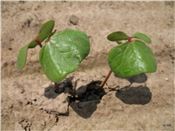
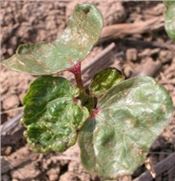
Figure 1. Cotton with seed treatment vs no seed treatment.
Photograph courtesy D. Cook, Mississippi State University
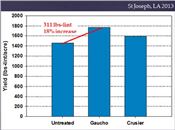
The broad-spectrum insect protection and systemic nature of neonicotinoid seed treatments in cotton translates into an average of 18 – 20 % increase in yield where a seed treatment is used (Figure 2.)
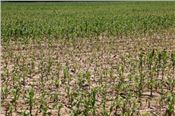
Figure 3. Severe wireworm injury in corn where no IST was used.
Photo courtesy LSU AgCenter

Figure 3. Effect of ISTs on corn stand and yield
Figure
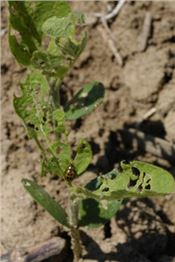
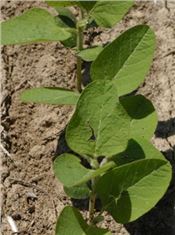
Figure 4. Soybeans with (right) and without (left) IST.
Photo courtesy LSU AgCenter
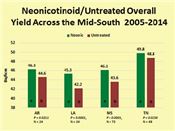
Figure 5. Average Soybean Yields for Mid-South States
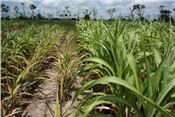
Figure 6. Grain sorghum with IST (right) vs without (left). Noticeable stunting caused by sugarcane aphids affects grain sorghum with no IST.
Photo courtesy Melanaphis task force

Figure 7. Aphids on Sorghum